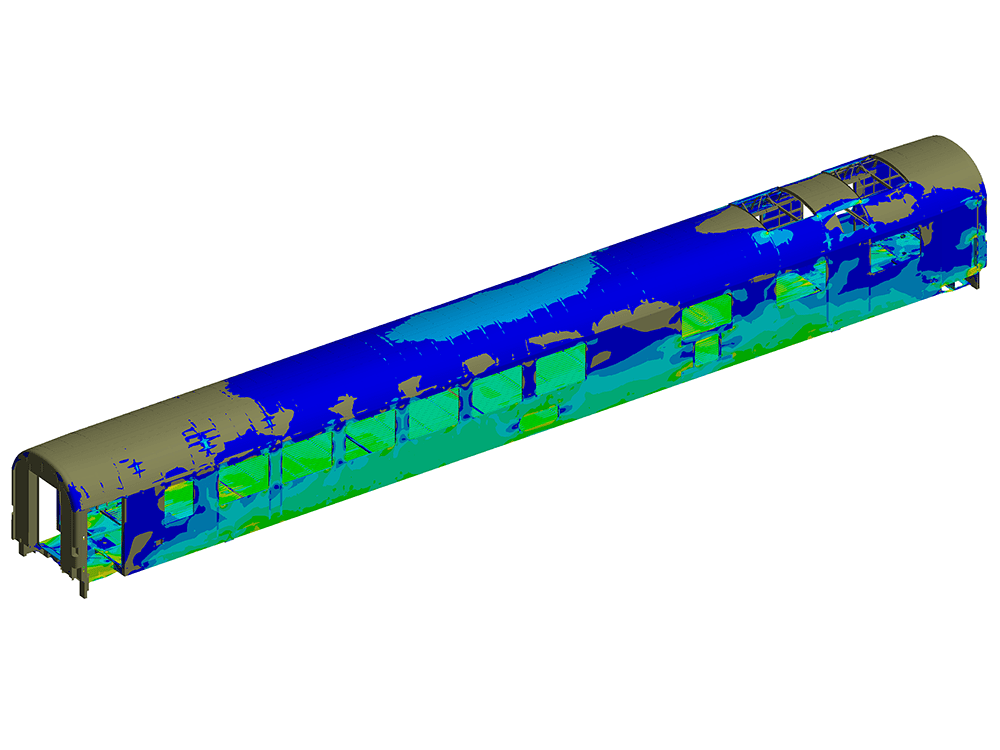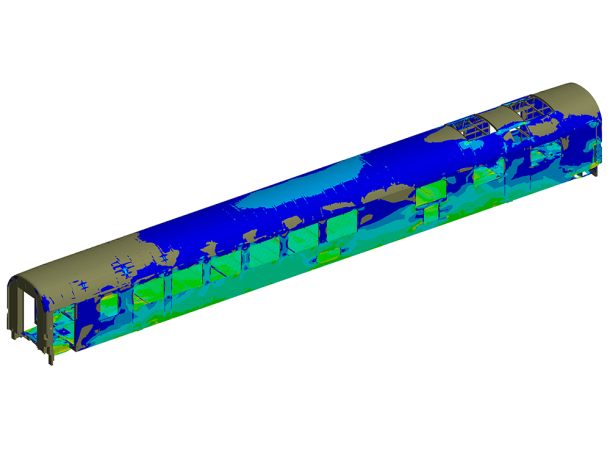Corrosion repair

Project tasks
- Creating a CAD model of the carbody from a set of drawings
- Creation of an FE model of the carbody
- Strength assessment of the condition without corrosion
- Consideration of corrosion damage in the calculation model
- Analysis and determination of minimum wall thicknesses
- Specification of measures for corrosion repair
- Preparation of drawings to document the repair solution
Our Approach
Corrosion damage to the lower structure of the carbody was discovered during the planning of conversion measures on dining carriages. The wagons are welded steel constructions from 1990 and due to the advanced age of the vehicles, the operator did not have any CAD models or strength documents. PROSE was commissioned to assess the utilisation of the carbody in terms of strength. First in their original, corrosion-free state and then considering the identified corrosion damage. Additionally, we were asked to develop solutions to prolong the service life of the vehicles.
In a first step, a CAD model was created from the set of drawings. This model then served as the basis for creating the Finite Element (FE) model, which embodies the target condition of the carbody structure. A subsequent strength analysis then showed how many theoretical reserves the structure still had.
In the next step, the FE model was updated to include corroded areas, and the calculations were repeated. In this way, the effect of corrosion on the structural strength of the carbody could be determined and evaluated.
Using an iterative approach, a maximum corrosion depth could be determined for the damaged areas. For areas where it was foreseeable that the corrosion would penetrate too deeply, repair solutions were also developed, which included welding in new profiles, and their strength was verified.
Customer benefit
Thanks to PROSE’s work, the customer now has access to a CAD model of the carbody. The strength analysis has enabled the determination of minimum wall thicknesses for vehicle areas typically affected by corrosion, which the customer can use to evaluate the extent of corrosion damage. For areas where corrosion has penetrated too deeply, the customer now possesses localised repair solutions. This can significantly extend the service life of the vehicles.



